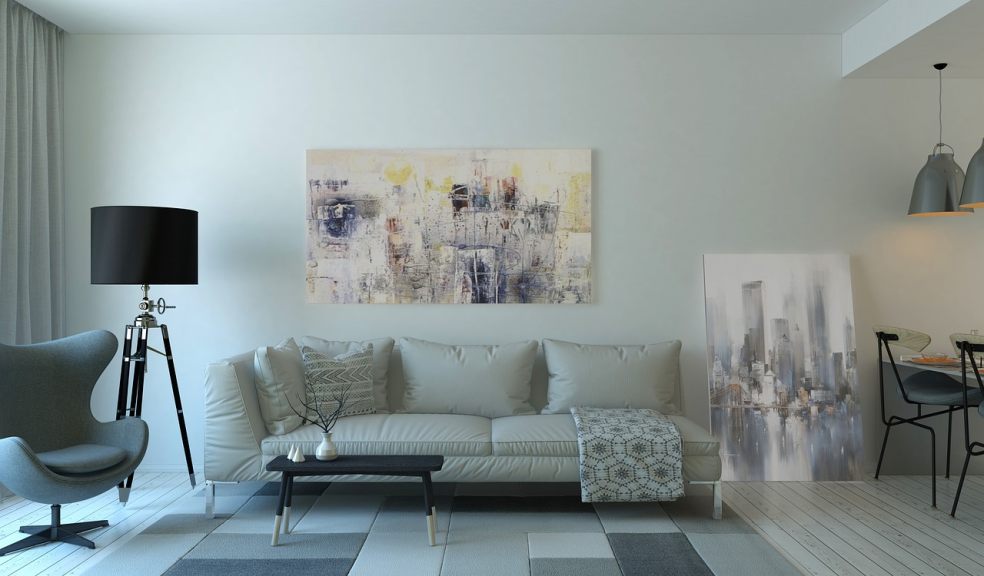
How to Make your Art Stand Out: Expert Tips from Professionals
Artwork, good or bad, is ultimately a visual attraction. It draws the eyes in to focus and hone in on shapes, colours, and patterns, all of which merge to create intricate themes. Visual stimulation transforms into mindful contemplation; the ultimate goal of any displayed collection is to invoke something internal.
Each piece of art has the potential to stand out depending on what techniques are used. Whether it be a landscape photography series, canvas art with abstract forms or an exquisite painting found while visiting an antique dealer.
Have you handpicked artwork to dress your newly painted walls but find it challenging to create the perfect display? Today, we’ll explore expert advice on displaying your artwork to halt viewers dead in their tracks.
Lighting
For your artwork to affect the viewer, it must first be seen. Hanging a statement piece on your wall without natural or artificial lighting could jeopardise its significant role within the space. The piece will intrude on the room’s design as a darkened shape, and visitors will have to squint to get a better look at the marvellous detail.
To combat this, strategically placing artwork close to windows or across from mirrors can illuminate the intricacies, highlight essential features, and bring more interest to the piece. If natural lighting is obstructed, wall-mounted and overhead frame attachments can provide ample illumination to showcase art.
Framing
Frames have always been a popular way of accentuating artwork. A white a1 frame against a dark wall or backdrop can make a noticeable difference when displaying your artwork. With a variety of frames and styles available, you have a multitude of options to choose from, no matter your preference.
From aged, vintage brass to various wood colours and grains, try to select frames that enhance your artwork and provide the room with an extra touch of design.
Gallery Wall
Choose a feature wall within your room or space and make a statement by collectively arranging artwork of varying sizes. Juxtapose colours and sizes or use this opportunity to tell an abstract story. A gallery wall will feel more cohesive and put together if curated correctly, ideal for those who prefer order within their interiors.
Nothing is set in stone when working with interiors. A focal wall doesn’t necessarily have to be harmonious to be effective. Featuring noisy, boisterous artwork can work well by contrasting against a softer, visually muted space. By mix-n-matching frames, you can create a wall of artistry and dramatics, a bold statement for any interior.
Placement
Arguably, placement is the most important element when working with artwork. Balance is a word quite often used to describe the absolutes of perfect placement; however, balance is somewhat subjective.
There are a few rules when placing art that, unless you’re a master of interior design, are best not to be challenged. One such rule is keeping artwork at eye level, around 55-65 inches from the ground. This ensures viewers can gaze upon your wonderfully curated selection of artwork in awe without pulling any muscles.
Using a focal point for your artwork is sure to garner attention. Walk around your space and observe what areas draw your eyes. Above sofas, beds, and fireplaces are often prime real estate for hanging artwork.
Narrative
Artwork that carries a narrative or follows a theme can create a visual display that draws in viewers and warmly invites them to explore. Abstract shapes, floral or cultural motifs and dramatic contemporary pieces help to extend design elements across a space, further highlighting creative cohesion.
A stand-out narrative also allows the designer or owner of the interior to incorporate personal elements, such as culturally inspired artwork collected from travels or commissioned pieces that hold a certain sentiment.
Scale
Depending on your preferences and what the space size allows in terms of design opportunities, long, oversized art pieces work particularly well in rooms with high ceilings. They can cover empty spaces by adding a stand-out dimension to walls, bringing life to starkness.
If the wall space doesn’t allow for large, decorative art pieces, one way to make your artwork stand out is by clustering smaller ones together. The uniformity of exact spacing can create an intriguing display, but a more abstract, unaligned approach is just as tasteful in the right space.
To Wrap Things Up
Stand-out art pieces can only stand out when the correct design techniques are applied when displaying them. By observing, evaluating and actioning, you can discover how the experts do just that. It also goes without saying that visuals are most impactful when seen.
Keeping a great piece of art hidden or even subtly obscured limits your interior from reaching its true potential. So, if you want visitors to ask about your art collection, make sure it stands out.













